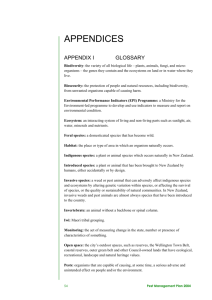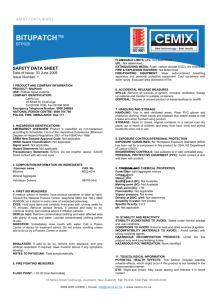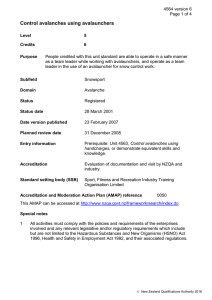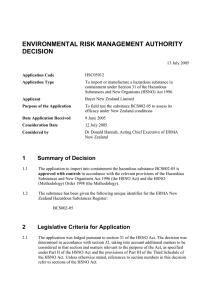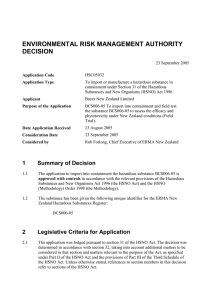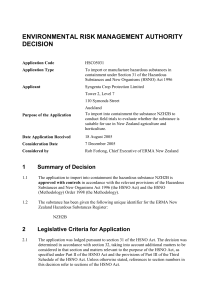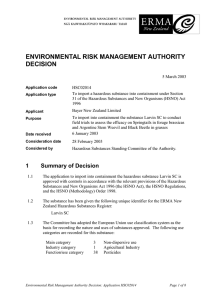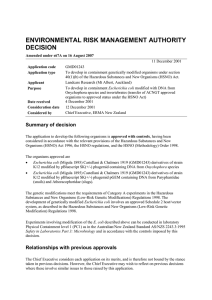LEGAL ISSUES SURROUNDING IMPORTATION OF NATURAL ENEMIES B.I.P. Barratt, J.M. Cullen, A. Moeed,
advertisement
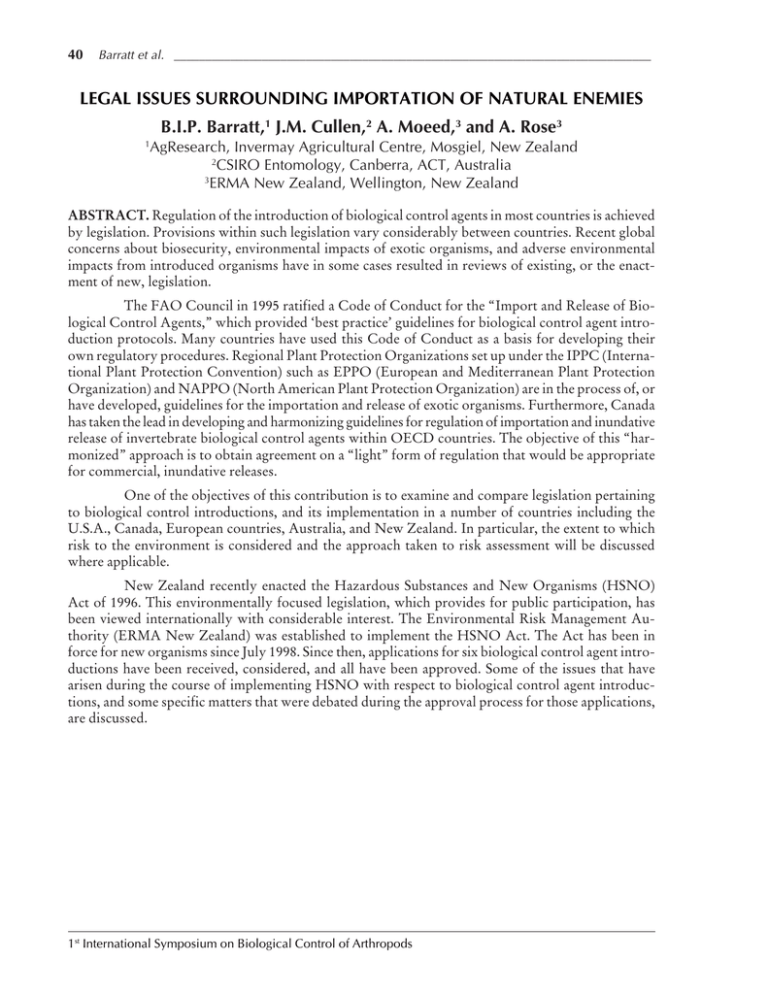
40 Barratt et al. ____________________________________________________________________________ LEGAL ISSUES SURROUNDING IMPORTATION OF NATURAL ENEMIES B.I.P. Barratt,1 J.M. Cullen,2 A. Moeed,3 and A. Rose3 1 AgResearch, Invermay Agricultural Centre, Mosgiel, New Zealand 2 CSIRO Entomology, Canberra, ACT, Australia 3 ERMA New Zealand, Wellington, New Zealand ABSTRACT. Regulation of the introduction of biological control agents in most countries is achieved by legislation. Provisions within such legislation vary considerably between countries. Recent global concerns about biosecurity, environmental impacts of exotic organisms, and adverse environmental impacts from introduced organisms have in some cases resulted in reviews of existing, or the enactment of new, legislation. The FAO Council in 1995 ratified a Code of Conduct for the “Import and Release of Biological Control Agents,” which provided ‘best practice’ guidelines for biological control agent introduction protocols. Many countries have used this Code of Conduct as a basis for developing their own regulatory procedures. Regional Plant Protection Organizations set up under the IPPC (International Plant Protection Convention) such as EPPO (European and Mediterranean Plant Protection Organization) and NAPPO (North American Plant Protection Organization) are in the process of, or have developed, guidelines for the importation and release of exotic organisms. Furthermore, Canada has taken the lead in developing and harmonizing guidelines for regulation of importation and inundative release of invertebrate biological control agents within OECD countries. The objective of this “harmonized” approach is to obtain agreement on a “light” form of regulation that would be appropriate for commercial, inundative releases. One of the objectives of this contribution is to examine and compare legislation pertaining to biological control introductions, and its implementation in a number of countries including the U.S.A., Canada, European countries, Australia, and New Zealand. In particular, the extent to which risk to the environment is considered and the approach taken to risk assessment will be discussed where applicable. New Zealand recently enacted the Hazardous Substances and New Organisms (HSNO) Act of 1996. This environmentally focused legislation, which provides for public participation, has been viewed internationally with considerable interest. The Environmental Risk Management Authority (ERMA New Zealand) was established to implement the HSNO Act. The Act has been in force for new organisms since July 1998. Since then, applications for six biological control agent introductions have been received, considered, and all have been approved. Some of the issues that have arisen during the course of implementing HSNO with respect to biological control agent introductions, and some specific matters that were debated during the approval process for those applications, are discussed. 1st International Symposium on Biological Control of Arthropods


